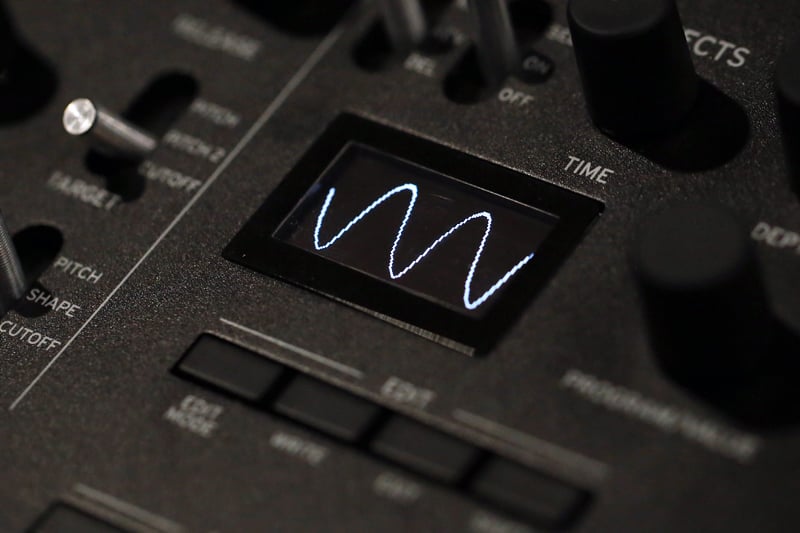Waveforms are the starting point of synthesis—and of all sound. In a synthesizer, an oscillator creates a repeated signal of a waveform. This waveform is what gets altered through synthesis.
But there are different types of waveforms, that come in specific shapes. Why does this matter? Well, different waveforms have different characteristics, which results in different sounds per waveform. Knowing what each waveform sounds like is a great starting point to help better control the kind of music you want to make.
Sound Basics
First up, some sound basics. The frequency of a soundwave relates to the pitch of the sound we hear. Waveform oscillations can move at different speeds, or frequencies. The faster they move, the higher frequency they have. The higher the frequency, the higher pitched the resultant sound is to our ears.
Crazy fact: Most musical sounds are not made up of just one frequency. Instead, sounds are a combination of many different frequencies, called partial tones. The lowest frequency is its fundamental frequency—this is what our ears perceive as the sound's "pitch," while all of the other partial tones combine to create a sense of timbre, or tone. So when you hear a piano playing a “middle C,” that tone is actually made up of a combination of different frequencies, or partials, that come together to create the sound of “middle C on a piano” to our ears.
Each waveform has a spectrum of partials associated with it—basically, lots of different sounds go into defining the quality of any given sound. As you alter a waveform’s shape, the partials themselves begin to rearrange, creating audible changes in the sound.
Sine Wave
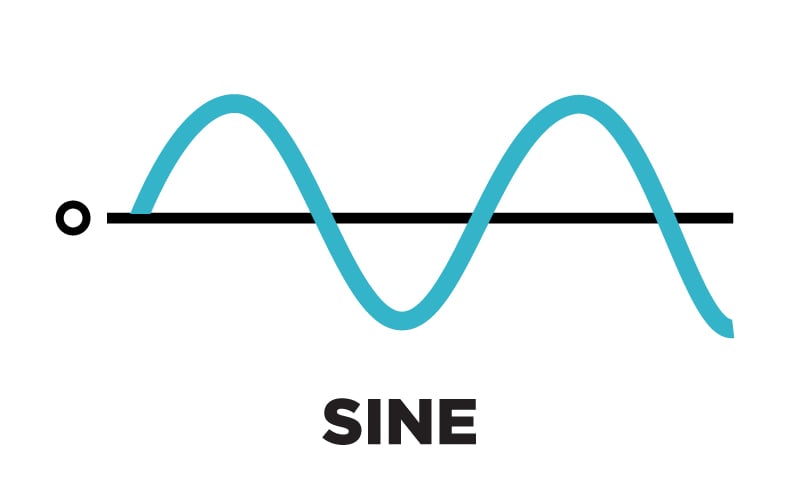
DEFINITION: A sine wave sounds like it looks: smooth and clean. It is sound at its most basic. The sound of a sine wave is only made up of one thing, something known as the fundamental. No partials to be seen! Try whistling one note or imagine the sound of a tuning fork. Those are both approximations of what sine waves sound like, though real-life sine waves are rare.
TRY IT YOURSELF: If you’re looking to create a smooth sub bass sound that doesn’t interfere with the bassline you are writing, then deploy a sine wave to create a beautiful deep tone.
DID YOU KNOW? Every other waveform can be created by adding up a series of sine waves.
Square Wave
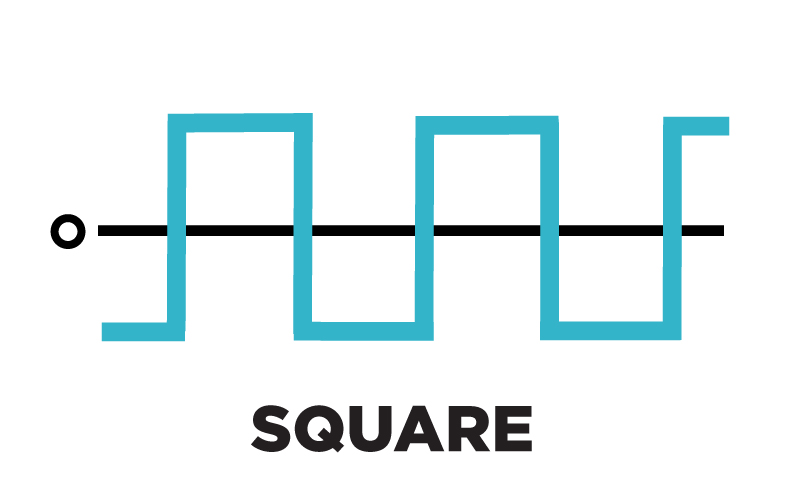
DEFINITION: Remember how a sine wave is only made up of one thing, the fundamental? Not the square wave. A square wave sounds richer and buzzier. It also looks different. These are both because in addition to the fundamental, the square wave also contains harmonics. A harmonic is a kind of partial tone which is a whole multiple of a fundamental frequency. In a square wave, these harmonics occur in whole odd-number multiples of the fundamental frequency. The harmonics, combined with the fundamental, give this wave a square shape.
TRY IT YOURSELF: Square waves can make aggressive, crunchy kick drums.
Triangle Wave
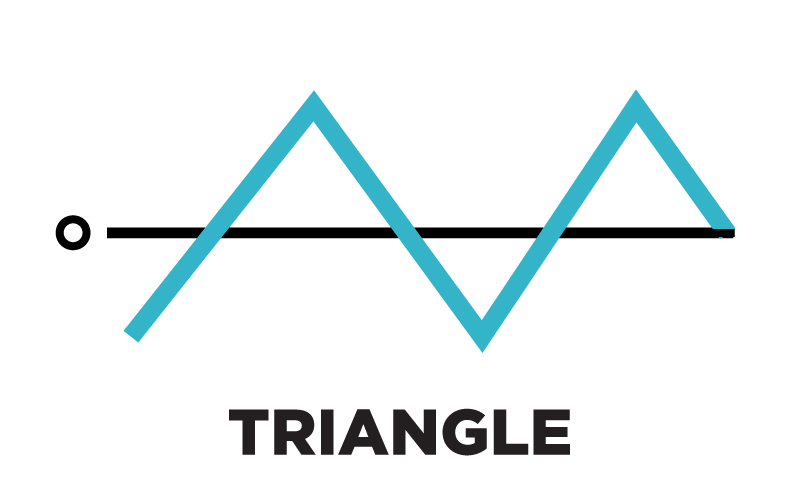
DEFINITION: A triangle wave contains the same odd harmonics as a square wave. Unlike a square wave, they taper off as they get further away from the fundamental, giving it its shape. It looks like an angular sine wave, and it sounds somewhere in between a square wave and a sine wave. It’s not as buzzy as a square but not as smooth as a sine wave. It sounds clearer, maybe even brighter than a sine wave. Think of a recorder, or a breathily-played flute—that sounds similar to a triangle wave.
TRY IT YOURSELF: A triangle wave can be edited to make a great lead melody line.
Sawtooth Wave
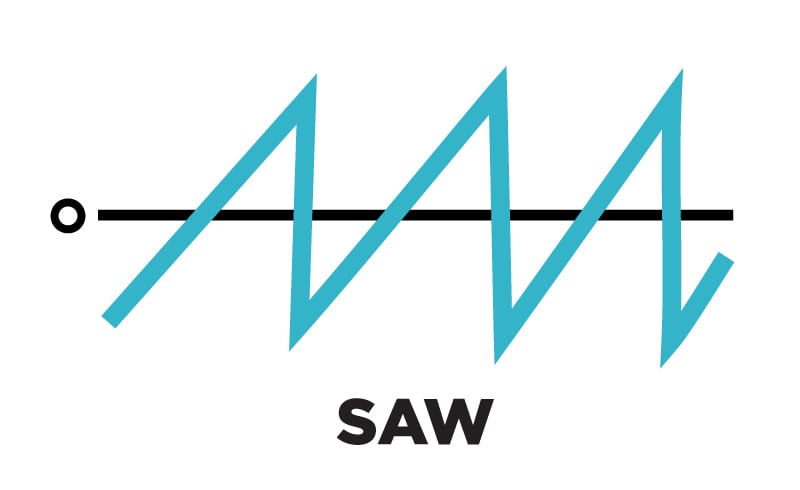
DEFINITION: Also called a saw wave, a sawtooth wave is much more jagged and, well, looks like a saw. It is the buzziest sounding of them all, sounding even harsher than a square wave, and that’s because it’s the richest in terms of harmonics. This means it can be a really great choice for when you’re working with subtractive synthesis, which is when you construct a sound by filtering out frequencies, rather than adding them on.
Think of the sound of a bow dragging across a violin. There’s science to explain it! The friction between the bow and the string pulls the string in one direction (the saw’s ramp) until it snaps back (the saw’s flyback) and repeats, giving the slightly buzzy sound to a violin.
TRY IT YOURSELF: Use several saws slightly detuned to create a phasing, supersaw sound!
While other waveforms certainly exist, these four are the primary foundation for the sound of most analog synthesizers. Whether working with a keyboards, modular, or even software, these shapes are likely to be there at the core of your synthesizer's voice.
If you are curious about some of the other weird forms an oscillator can take, be sure to check out our Learning Synthesis series—the article on Oscillators in particular will be of interest!

